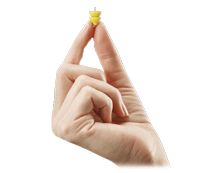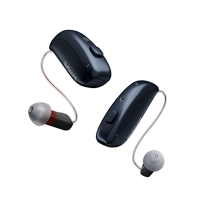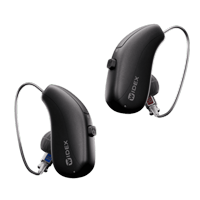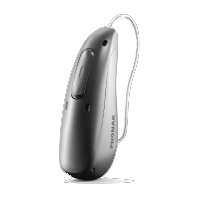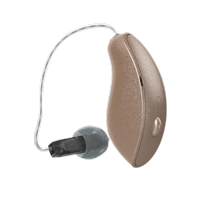LATEST UPDATE – April 9, 2025
Despite many rumors of a potential pause, the White House has confirmed that there is a 90 day pause on enacting tariffs for most countries (outside of China). For the most current information, visit CNBC’s live coverage.
Navigating the Impact of Trade Policies on Hearing Aid Availability: Uncertainties and Considerations
Recent changes in U.S. trade policy have created uncertainty across many industries, including the hearing healthcare sector. With new tariffs potentially affecting medical devices and supplies, many hearing care professionals and patients are wondering about the possible impact on hearing aid prices and availability. After consulting with industry experts, we’ve gathered the latest insights—though many questions remain unanswered.
Key Takeaway: While it’s too early to know exactly how trade policies will affect hearing aids, we’re monitoring the situation closely to keep our patients informed about potential impacts on pricing and availability.
The Hearing Industry’s Response
Industry leaders are currently in what one might call a “wait and see” mode. The Hearing Industries Association (HIA) and major manufacturers are assessing the situation as it evolves. Many are still determining how these policies might affect their supply chains, manufacturing processes, and ultimately, consumer prices.
Like other medical technology sectors, the hearing industry must navigate complex international trade relationships. The dust hasn’t settled yet on how these policies will specifically impact hearing devices.
Medical Device Exemptions: The Big Question
A critical question is whether hearing aids and related technology will receive exemptions as medical devices. While pharmaceuticals have received exemptions from the new tariffs, currently there don’t appear to be blanket exceptions for all medical devices.
Several potential pathways for exemption exist:
- Special carve-outs specifically for hearing technology
- Exemptions under Chapter 98 of the Harmonized Tariff Schedule
- The Nairobi Protocol, which allows duty-free status for products designed for people with physical impairments
- Precedent from previous tariff situations where hearing aids received exemptions
There’s also sound justification for exempting EU medical devices, as most European countries apply minimal or no tariffs to U.S.-made medical equipment.
Potential Impact on Manufacturers
The global hearing aid industry is dominated by five major manufacturers who account for over 90% of prescription hearing aids worldwide. Three are headquartered in Denmark (part of the EU), one in Switzerland, and one in the United States.
| Hearing Aid Group | Primary Manufacturing Locations |
|---|---|
| GN (ReSound, Beltone, Jabra) | US, Canada, EU, China, Japan, South Korea, Australia |
| Sonova (Phonak, Unitron, Sennheiser) | US, Switzerland, EU, Mexico, Vietnam, China |
| WS Audiology (Signia, Widex, Rexton, Sony) | US, EU, Mexico, Singapore, China |
| Demant (Oticon, Philips, Bernafon) | US, EU, Mexico, China |
| Starkey | US |
Many manufacturers have already been adapting their supply chains through “near-shoring”—moving production closer to major markets. For example, some companies have established manufacturing facilities in Mexico, potentially reducing their exposure to certain tariffs.
If tariffs do apply to hearing devices, all major companies would be affected to some degree due to their global supply chains. However, hearing aid manufacturers may have more flexibility in their production compared to other medical technology companies.
What This Means for Hearing Aid Prices
The honest answer is: we don’t know yet. It could be weeks or months before the full impact becomes clear. However, we can make some educated observations:
- If tariffs do apply to hearing aids, the price impact for most prescription devices might be in the range of $100-200 per set, though this is speculative
- Manufacturers and providers may absorb some of these costs rather than passing them all to consumers
- Over-the-counter (OTC) hearing aids from heavily-tariffed countries might face greater challenges, especially those competing primarily on price
For patients considering hearing aids in the immediate future (next 1-2 months), making a purchase sooner rather than later might be prudent. For those with longer timeframes, it makes sense to monitor the situation as more information becomes available.
California Hearing Center can help
For over 30 years, California Hearing Center has been helping people improve their lives through better hearing. Whether you are having a conversation with your family, enjoying a meal at a restaurant, meeting with people at work, out shopping with friends, or taking a walk in the park, hearing well is an essential part in turning up the enjoyment of life.
Call us today to set up an appointment for a hearing screening. We can discuss hearing aid options with you and work with you to find an option that fits your budget.
This article represents our current understanding of a rapidly evolving situation. Information may change as policies are clarified and implemented. This content is for informational purposes only and should not be considered financial or legal advice.
Keywords: hearing aid tariffs, Trump trade policy, medical device exemptions, hearing healthcare costs, hearing aid manufacturers, hearing aid prices, audiology industry news, hearing aid supply chain, healthcare policy, hearing technology, California Hearing Center, audiology appointments


